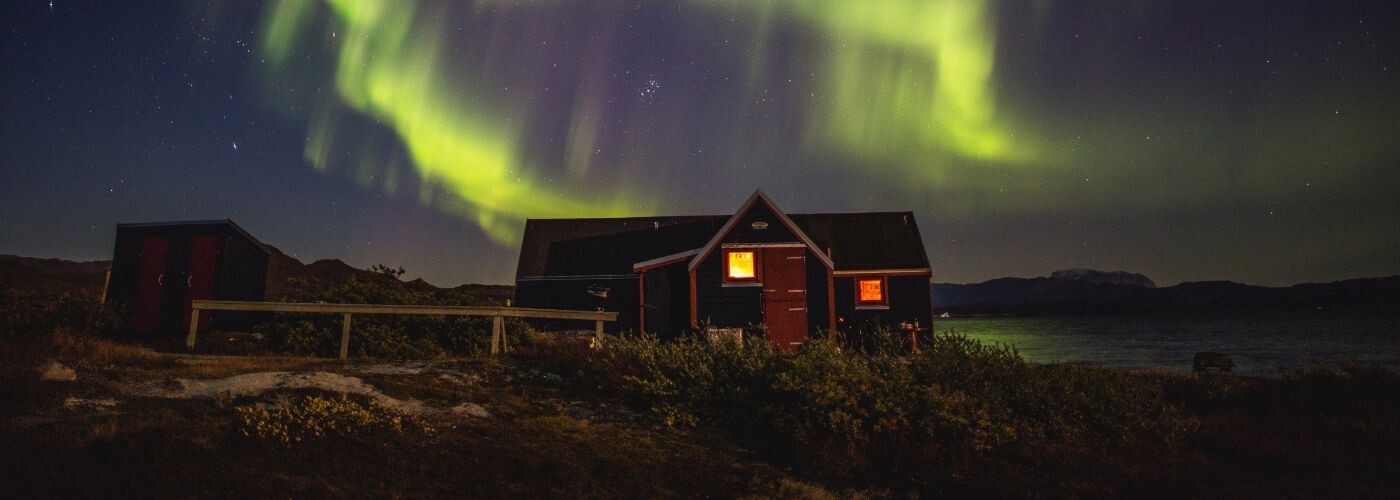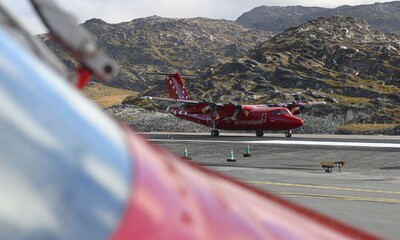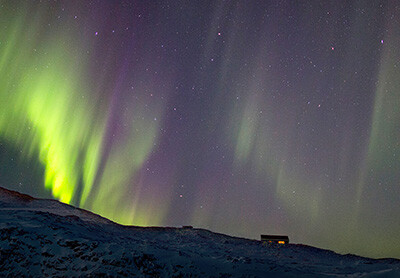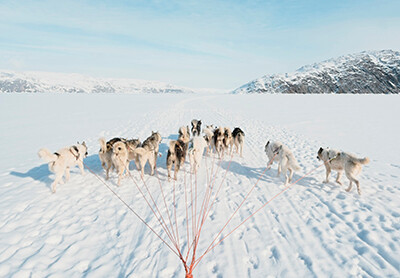.jpg)
What to Expect: Weather and Climate in Greenland in Winter
Greenland’s winter transform the landscape into a wonderland of ice, where the northern lights dance across the sky and dog sledding becomes a classic mode of travel. Here's what you can expect from temperatures:
- October in Greenland: -5°C to -15°C, with increasing darkness and the first snowfalls.
- November – January in Greenland: -10°C to -25°C, darkest and coldest months, with polar night in the far north.
- February – March in Greenland: -15°C to -25°C, still very cold but with more daylight returning.
- April in Greenland: -5°C to -15°C, longer days and slightly milder temperatures, but still wintry.
The air is extremely dry, and wind chill can make it feel even colder, and you’ll need to hydrate more than usual and protect your skin. Be prepared for long nights,, and the possibility of sudden weather changes.
Greenland’s Seasons: Spring, Summer, Autumn, and Winter
While this guide focuses on winter, each season in Greenland offers something unique. Spring brings the return of light, summer offers endless days and vibrant landscapes dotted with icebergs and glaciers, autumn paints the tundra in gold, and winter transforms Greenland into a wonderland of snow, ice, and outdoor adventure.
What to Wear in Greenland in Winter
Packing for Greenland in winter means thinking basic, practical, and warm. The key is the layer-on-layer principle, allowing you to adapt to extreme cold and periods of stillness—especially on dog sledding adventures or while watching the northern lights shimmer above glaciers and icebergs. Choose clothing that is easy to layer, windproof, and water-resistant.
If you enjoy dressing up for dinner at a hotel or restaurant, feel free to bring a nice outfit, but practicality and warmth are most important.
The Difference Between Winter Months in Greenland:
- October & April: Milder, but still cold—layering is essential.
- November to March: Extreme cold—extra thermal layers, windproof and insulated outerwear are crucial.

Greenland Packing List: Essentials for October – April
In addition to your regular clothes, we recommend:
- Good winter boots (Sorel or Baffin are excellent for Greenlandic conditions)
- Warm wool socks (bring several pairs)
- Warm, insulated winter jacket
- Wind- and water-repellent outer pants
- Fleece jacket or vest for layering
- Thermal underwear (top and bottom)
- Jogging pants or leggings (for extra warmth under outer pants)
- Neck warmer or scarf
- Warm winter hat (preferably windproof and ear-covering)
- Wind- and water-repellent mittens (with inner lining)
- Gloves (for milder days or layering under mittens)
Protection from Dry Air and Sun
- Intensely moisturizing body lotion, hand cream, and lip balm
- Sunscreen (especially in April), high factor
- Sunglasses (for bright snow glare reflecting off glaciers and icebergs)
- Eye drops (especially if you wear contact lenses)
If You Wear Glasses
- Be aware that metal frames can cause frostbite; consider contact lenses and always carry eye drops. If wearing glasses, ensure they don’t have direct contact with your skin in extreme cold.
Other Essentials
- Earplugs (sled dogs can be noisy, especially during dog sledding excursions)
- Pocket binoculars (for wildlife, glaciers, and iceberg viewing)
- Map of the area (see Nordic Map Trading: www.scanmaps.dk)
- Reusable water bottle (stay hydrated in the dry air)
Renting Winter Clothing
If you’re going dog sledding or visiting an igloo lodge, you can rent winter clothing and boots locally:- Winter clothes: 250 DKK per day
- Baffin/Sorel boots: 65 DKK per day

Baggage Rules for Flights to Greenland
When you pack for your trip, remember to check the baggage limits:
- Checked luggage: Maximum 20 kg
- Hand luggage: Maximum 8 kg
Outdoor Activities in Winter
Winter in Greenland is perfect for dog sledding across frozen fjords, snowshoeing among glaciers, watching the northern lights illuminate the ice, and exploring the Arctic wilderness. Dress in layers, protect yourself from the cold and wind.
We also cover travel tips for the best experiences in each region, from Nuuk and Ilulissat to Sisimiut and Kangerlussuaq.
Travel Tips: Currency, Hotels, and More
- Currency: Danish krone (DKK) is the official currency. Euros are not widely accepted.
- Hotels: Book in advance, especially in popular towns.
- Northern Lights: Winter is the best time to see the aurora borealis shimmering above the ice and glaciers.
- Time Zones: Most travelers arrive via Nuuk or Kangerlussuaq, which are in the same time zone as western Europe.
- Culture: Take time to experience Greenlandic culture, from local cuisine to traditional winter activities.


